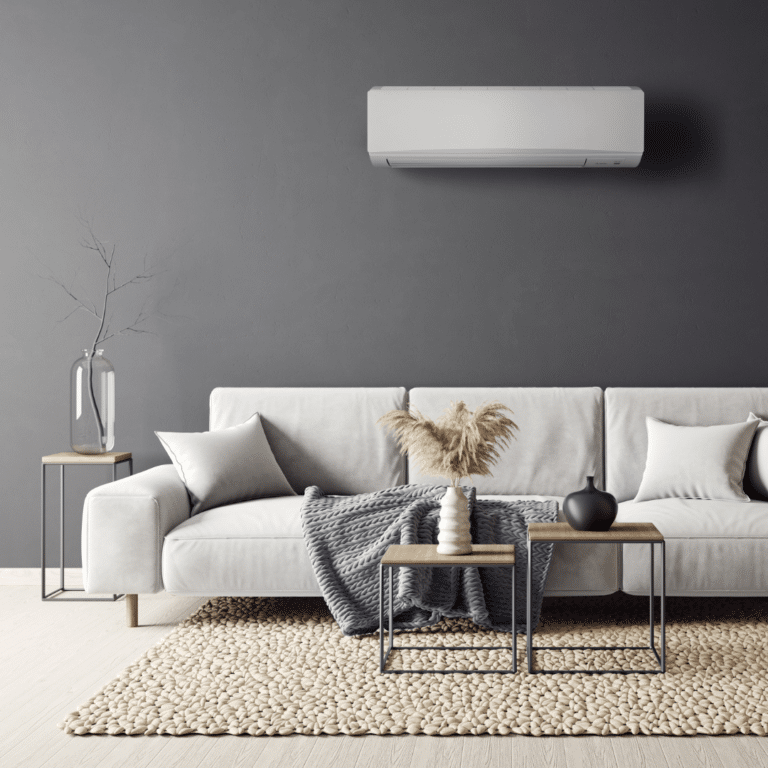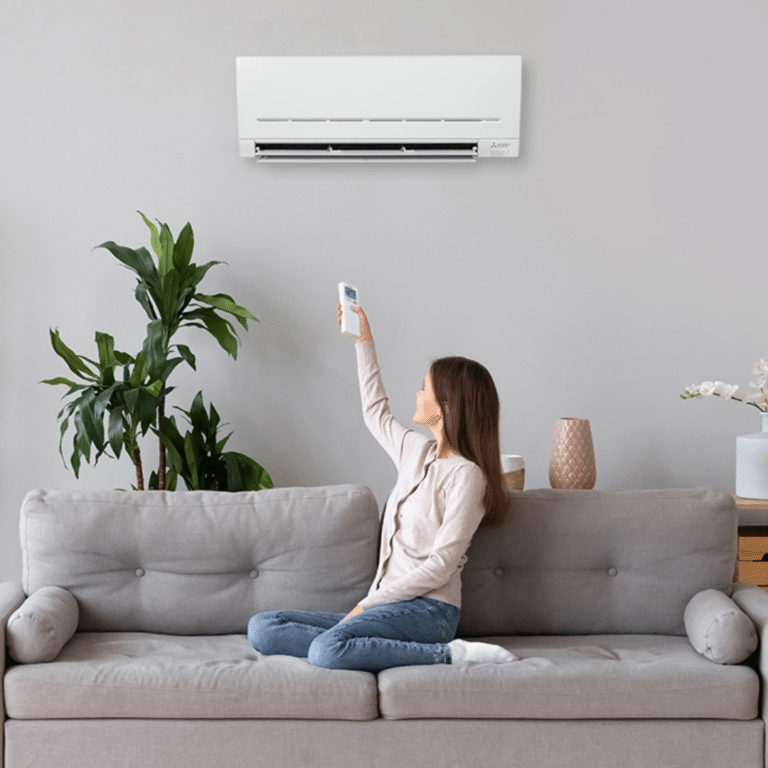When it comes to kitchen appliances, few are as essential and versatile as refrigerators. From keeping our groceries fresh to storing leftovers and drinks, a good fridge is a fundamental part of any modern home.
The purpose of a refrigerator is to preserve perishable foods, essentially keeping harmful bacteria at bay to extend food shelf life and reduce waste. But beyond this practical need, the modern fridge meets a variety of other demands through innovative features—such as adjustable shelving for custom storage solutions, in-built ice makers for simple convenience, specialised cooling features for different types of food, and more.
The right fridge can cater to your unique needs while also complementing the aesthetic of your kitchen. Selecting the ideal refrigerator ensures that it becomes an indispensable part of your daily life, fitting in naturally with your lifestyle and your space’s interior design.
However, with a wide range of options available in the market, finding the perfect refrigerator can sometimes be a daunting task. Before making your purchase, consider these key factors to help determine which refrigerator is best suited to your needs.
Determine Your Space and Capacity Requirements
Before searching through all of the refrigerator options available, it’s important to measure the space your fridge will take up. Nothing could be worse than getting your brand-new fridge home only to discover it won’t fit in your kitchen or that its capacity is too small or large for your needs.
Fridges come in various sizes, including compact, standard, and French door models. Consider the width, height, and depth of the area where the refrigerator will be placed to ensure a proper fit.
TIP: Mitsubishi Electric recommends you add an extra allowance* to the dimensions of each side, top and back of the fridge model you measure to ensure it has enough space around it to fit your cavity area and to allow for necessary airflow. (*Clearance dimensions vary by model, please check and refer to the recommended clearance indicated in the specifications table.)
To help narrow down your options, Mitsubishi Electric has developed a convenient app called ‘Fridge Finder’ that aims to assist you in selecting an ideal refrigerator for your space. Just tell it how wide and tall your fridge cavity is, and it will give you a selection of Mitsubishi Electric refrigerator models that fit your available space. You can even photograph your kitchen and see how different fridges would look.
What Size Fridge Do You Need?
How much space do you need? Consider your storage requirements and family size to determine the ideal capacity, keeping future needs in mind. Ask yourself the following questions to help determine the right fridge capacity for your needs:
- Do you entertain friends and family frequently? A fridge with flexible shelving options to fit in large cakes, platters, wine bottles, and more may be the right choice for you.
- Do you often cook food in bulk and then freeze leftovers? A fridge with plenty of easily accessible freezer space could be a good fit.
- Do you enjoy cooking fresh and delicious meals at home? If yes, then you need a fridge that is large enough to store your ready-to-go home cooking ingredients with a large fresh produce storage section.
- What is the size of your household? A bigger fridge freezer with plenty of space will be needed for a larger household. For a smaller household, a more compact design is generally preferable—though when it comes to fridges, it’s better to opt for slightly more space than you need, as it allows for future expansion.
The new volume measurement, introduced by MEPS (Minimum Energy Performance Standards) in August 2021, refers to the usable and accessible space inside the fridge for storing food and beverages. This standardised measurement simplifies comparing storage capacities between the different refrigerator models you are considering.
.
Types of Fridges: Pros and Cons for You to Consider
Refrigerators come in different styles to suit individual preferences and kitchen layouts. The four main types are:
Top Mount Fridge
This classic style features a freezer compartment on the top and a refrigerator below. It is one of the most affordable designs and is usually suitable for limited spaces or smaller households.
Pros of top mount fridges:
- Affordability: One of the most cost-effective fridge options, making it an accessible option for anyone.
- Space efficiency: The compact design is ideal for smaller spaces, including apartments or homes with limited kitchen area.
- Energy efficiency: These types of fridges are often more energy-efficient than larger models due to their smaller size and simpler design.
Cons of top mount fridges:
- Limited access to the freezer: Since the fridge door is at the bottom, it may be inconvenient for some people to reach items in the freezer compartment, especially those with mobility issues.
- Fewer features: The basic design means it doesn’t have some of the advanced features found in more advanced refrigerators.
Bottom Mount Fridge
The freezer is located at the bottom, making accessing the more frequently used refrigerator compartment easier. These refrigerators can offer a good balance of convenience, features, and affordability and are ideally sized for apartment living. Some models, such as the Mitsubishi Electric CX Series and CGX Glass Series, feature a three-door design to incorporate a separate vegetable drawer.
Pros of bottom mount fridges:
- Convenience: Bottom mount fridges provide easier access to the refrigerator section, which is used more frequently, reducing the need to bend over.
- Versatile design: Suitable for a range of living situations, from singles to families, thanks to a good balance of features and size.
- Improved freezer organisation: Mitsubishi Electric bottom mount fridges feature pull-out drawers in the freezer compartment, which can help organise frozen goods more efficiently than a traditional door design.
Cons of bottom mount fridges:
- Freezer accessibility: Items in the bottom freezer may be harder to reach for some people who have trouble bending down, especially heavier items that need to be lifted.
French Door Fridge
These models have a double-door refrigerator on top and a freezer section below. They offer a spacious and stylish design with wide shelving, perfect for those who frequently entertain or have large families. French door fridges open to access wide shelves, ideal for large platters and containers, and offer ample storage.
Pros of French door fridges:
- Large capacity: The French door style offers ample space, making it ideal for families or those who entertain often. It also allows for easy storage of large items.
- Aesthetic appeal: The upscale design can serve as a focal point in modern kitchens.
- Easy access: Wide shelves, storage bins in the refrigerator section, and easy-access freezer doors provide convenient access to fresh and frozen food items.
Cons of French door fridges:
- Higher price point: This style of fridge may be more expensive due to its generous size and advanced features.
- Space requirements: Given their ample storage capacity, French door fridges usually require a larger kitchen space to accommodate the wider design. However, there are smaller versions of the classic French door style available, such as the Mitsubishi Electric L4 Mini series. Another alternative is multi-drawer fridges, which have the features of a French door but in compact dimensions.
Multi Drawer Fridge
These versatile models offer separate compartments or drawers for different types of food. They can provide better organisation and easier access to stored items while keeping them at optimal temperatures. The main refrigerator has a French door design in the top section, while the bottom contains the freezer, vegetable and ice-making compartments. With their sleek design and cutting-edge features, these fridges cater to those seeking both functionality and style.
Pros of multi drawer fridges:
- Optimal organisation: Multiple compartments and drawers allow for better organisation and separation of different types of food, which means everything has its place and is easier to find.
- Temperature management: Precise control over the different compartmental temperatures means you can store food the way you want to.
- Design and features: This sleek, modern design comes with high-tech features that cater to tech-savvy customers looking for convenience and style.
Cons of multi drawer fridges:
- Space utilisation: The individual compartments may not be able to accommodate bulky items as efficiently as a single-space fridge, potentially limiting storage flexibility for large or awkwardly shaped items.
TIP: Mitsubishi Electric recommends looking for models with a two-way flexi shelf that slides back to reduce the shelf size to accommodate bulky or odd-shaped items.
.
Must-have Fridge Features: What Do You Need Most?
Now that we’ve explored the various features, advantages, and benefits of the various fridge styles, it’s time to consider your must-have features. What inclusions do you absolutely need in your new fridge? Knowing the difference between a need and a nice-to-have can help you narrow your search for the perfect fridge.
Capacity and Storage
When choosing a fridge, consider its capacity and storage options. A larger fridge can store bulk purchases and larger items, making it ideal for families or those who entertain often. Adjustable shelves and compartments enhance flexibility, allowing you to customise the space to fit your storage needs.
Energy Efficiency
Energy efficiency can help to minimise your fridge’s operational costs and environmental impact. Look for models with high energy star ratings, as they consume less electricity than models with fewer stars.
Ice Maker
You want ice? You got ice. All bottom mount, French Door and Multi Drawer models of Mitsubishi Electric fridges, such as the WX Series Multi-Drawer Fridges, come with an automatic ice maker that does not require a plumbing connection. This makes it simple and convenient to always ensure you have fresh, cold ice when needed.
Advanced Temperature Controls
Advanced temperature controls allow for precise settings in different compartments, ensuring optimal conditions for various types of food. This helps keep food fresher for longer and prevents spoilage and waste. Some fridges offer digital controls for easy adjustments and monitoring.
Supercool Chilling Case
A Supercool Chilling Case is a convenient feature that allows you to store perishable food such as meat, fish, or other items just above freezing temperature. This provides the benefit of having food ready to cook without the need for defrosting. Mitsubishi Electric stocks several fridges with this convenient feature.
Multi-function Freezer
A multi-function freezer is designed to be versatile, offering more than just standard freezing capabilities. The Supercool Freezing Drawer, like that found in the Mitsubishi Electric WX Series fridges, aims to preserve food quality by maintaining moisture and taste. It offers two main modes: Supercool Freezing and Hot Freezing.
- Supercool Freezing: This mode is designed to freeze food items evenly while minimising the formation of ice crystals. It helps retain the moisture and texture of the items. This mode is particularly useful for fresh steaks and sauce, boiled vegetables, freshly cooked rice and seafood, as it helps to preserve their quality and minimise freezer burn.
- Hot Freezing: In this mode, the LED sensor detects hot food and adjusts the cold air flow directly onto it, saving time and preserving the food’s quality and freshness. This feature is handy when you need to freeze bulk-cooked meals before placement in the main freezer compartment.
.
Mitsubishi Electric Fridge Finishes to Suit Your Style
What finish will you choose for your new fridge? To help get you inspired, here are a few options for you to consider:
- Stainless steel: Stainless steel fridges offer a sleek, modern look that complements any kitchen design, from contemporary to classic. A light or dark stainless steel finish is highly durable, easy to clean, making it ideal for busy households.
- Classic white: A classic white fridge brings a clean, fresh look to your kitchen, promoting a sense of brightness and openness. This timeless finish suits a wide range of kitchen styles, especially country, minimalist, or Scandi-inspired designs.
- Black: Black fridges are known for their bold, striking appearance that can anchor a kitchen’s aesthetic. This finish is versatile, fitting well with modern, industrial, and contemporary kitchen designs. It’s particularly effective in creating contrast with lighter cabinetry or as part of a monochromatic scheme.
- Glass: Glass-front fridges are on the cutting edge of kitchen design, offering a unique and modern look that can completely transform your space. This finish is perfect for minimalist or contemporary kitchens, adding a touch of elegance and luxury.
.
Environmental Factors When Choosing a Fridge
When choosing a new fridge, you should also consider the Energy Star rating. This is a simple and easy way to assess an appliance’s energy efficiency. A higher star rating means that you’re not only reducing your household’s carbon footprint but potentially saving on electricity bills, too.
Standardised tests that simulate typical usage conditions determine a fridge’s energy rating. These tests measure the appliance’s energy consumption over a specified period, usually 24 hours. The results are then compared against benchmark standards to assign the efficiency rating. Factors such as the fridge’s size, capacity, and features like auto-defrost are considered to ensure a fair comparison.
Energy Efficiency Matters
Recently, preference has shifted from old, inefficient refrigerators to more energy-efficient and stylish models. The current Mitsubishi Electric fridge models are tailored for Australians, with energy ratings of up to 4.5 stars, depending on the model.
The Energy Star system provides a straightforward method for identifying energy-saving freezers, fridges, and other appliances. The Australian Government regulates this system, and you can find comprehensive information on energy ratings at the Energy Rating website.
.
Budget Considerations
Before you begin your search for a refrigerator, it’s essential to establish a budget. The price range for fridges varies depending on size, brand, style, and additional features. Set a realistic budget that aligns with your needs and explore options within that range.
How Much Does it Cost to Run a Fridge?
The cost to run a fridge annually varies based on its energy efficiency, size, and local electricity rates. More efficient models with a 4.5 Energy Star rating are on the lower end, consuming less electricity, while older or larger models with lower efficiency ratings will most likely cost more. The exact expense also depends on the specific electricity price per kWh in your area. Opting for a high-efficiency fridge can reduce running costs over time.
Brand and Warranty
Choose a reputable brand known for producing reliable and durable appliances. Research customer reviews and awards, such as ProductReview.com.au and CHOICE, and consider factors such as after-sales service and warranty coverage. A good warranty ensures peace of mind and protection against potential issues.
.
10 Fridge Installation Tips and Advice
- Measure your space: Before purchasing a new fridge, measure the height, width, and depth of the space where it will go. Remember to account for door opening space. Check the fridge model specifications for clearance dimensions on the sides, back, and top for ventilation.
- Check the doorway: Ensure the fridge can fit through all doorways and passages on the way to its final location. If not, you may need to consider alternative ways to get it into your home or consider a smaller model.
- Position near a power source: Install the fridge close to a dedicated power outlet. Avoid using extension cords or power boards, as fridges require a stable power supply directly from the wall.
- Level the fridge: Once in place, adjust the feet at the bottom of the fridge to ensure its level. This is important for efficient cooling, and to ensure the door opens and closes properly. If the top of the doors don’t align it is a sign that your floor is not as flat as you probably think it is. Read the How to level your refrigerator or freezer guide for our tips on setting up your fridge.
- Allow the fridge to settle: It’s important to let a fridge stand upright for at least 24 hours before turning it on if it is transported horizontally. This allows the refrigerant to settle, preventing damage to the compressor.
- Set the correct temperature: Once turned on, set the refrigerator to the desired temperature, based on the food items stored and ambient/external temperature.
- Install the water connection (if applicable): Properly connect to a water line for fridges with ice makers or water dispensers. If you’re not familiar with plumbing tasks, use a qualified plumber. Mitsubishi Electric fridges with an automatic ice maker do not require separate plumbing, making this part of the fridge setup easy. Just fill the water tank and you’re good to go. You can skip this expense and ongoing cost of in-line water filter replacement.
- Wait before stocking: Allow the fridge to reach its set temperature before filling it with food. This could take a few hours.
- Review the manual: Finally, review the manufacturer’s manual for any specific instructions or recommendations that can help ensure the longevity and optimal operation of your brand-new fridge.
- If in doubt, call a professional: Finally, if there is anything you’re unsure about, then contact the supplier or the manufacturer to answer any questions you might have. When it comes to electric appliances, it’s best to check in with the professionals when you have questions or concerns.
.
Are You Ready to Purchase a New Refrigerator?
Purchasing a refrigerator for your home requires careful consideration of many factors, such as size, style, energy efficiency, features, budget, and brand reputation. What is most important is prioritising your household needs before anything else and doing as much research as possible to help make the right decision. Use this guide as a starting point to help you make an informed choice that meets your needs, and visit our website for further information on the award-winning Mitsubishi Electric Fridge range.



